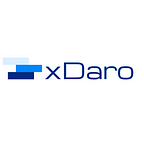DLT technology supports the three pillars of the financial market — transparency, speed, and security, making us wonder about digital asset management, how technology applies to this part of the industry, and how it could and extend its value chain.
DLT stores data in a different way and some of you are probably very familiar with it. It stores data in blocks that must be verified by all involved parties — nodes (computer systems). This structure provides various benefits.
Advantages of DLT for asset management
- Enhanced security — All records are accurate and invariable in that way eliminating possible data breaches and attacks.
- Speed — the DLT can offer near-real-time asset tracking, meaning that managers can have insights into data changes that can have a potential influence on the client’s portfolio.
- Operational efficiency — the basis of the DLT structure enables higher efficiency. Involved parties do not need to send information to each other. They need to update their records, and the DLT ensures the information is updated between all the nodes — computer systems, creating almost instant data exchange.
- Client & partner onboarding — DLT provides a structure on which to develop solutions for easing the onboarding process that includes: validation of identity, citizenship, asset ownership, wealth sources, business interests and job occupation, political ties, etc. DLT based solution ensures permission and access between institutions.
- Improved trading infrastructure — currently, trade settlement and clearance take up to three days. Using DLT counterparty risk is eliminated, and capital is more available. As there is a requirement for all involved parties to approve, DLT can separate trade and clearing.
- Compliance — everything is audited by default, as the data block provides information on the transaction’s financial details, unchangeable date, and time stamp with a digital signature.
Challenges of DLT for asset management
Even though there are clear advantages and improvements that DLT can provide for asset management and the investment industry, there are technological, regulatory, and even psychological challenges.
- Lack of knowledge — the financial sector is familiar with risk; however, it is different when a technology that the majority is unfamiliar with wants to enter the market.
- Limited historical information — DLT has to prove itself in processing billions of transactions while ensuring reliability and security. For now, Visa is the leader in transaction speed by processing 24,000 per second.
- High costs — the technology providers and regulators need to work on a workable solution to meet the requirements of both sides. After that, the system replacement costs come in due to radical changes in financial institutions.
DLT in asset management is an open and ongoing discussion; therefore, we will continue to talk about digital asset management in our future blogs.
Sources:
Dataversity
Ignite
